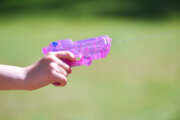When you’re working out to lose weight, you want every exercise to work in your favor. No bead of sweat goes unrewarded, right? Unfortunately, it doesn’t always work that way.
Here, we reveal four popular exercises that don’t burn nearly as much fat as you might think — or hope. Fear not: We’ve also served up expert-approved strategies for getting the most out of your fat-loss efforts.
[See: U.S. News’ 38 Best Diets Overall.]
1. Long Runs
To run for hours on end, you have to run at a slower pace. It’s not because you’re unfit; it’s just how biology works. (Your aerobic energy system is what allows you to exercise for a long duration, but it doesn’t provide energy fast enough for you to go very fast.) However, at that slower pace, you can end up spinning your wheels.
“Science proves that if you perform cardio at a lower intensity, a higher percentage of calories will come from fat, but you’ll burn fewer calories overall,” explains Los Angeles-based personal trainer and certified strength and conditioning specialist Mike Donavanik. And while it’s your total number of calories burned that dictates weight loss, it’s important to note that at slower paces, especially when endured for an hour or longer, a decent chunk of those calories can come from protein — that’s pure, calorie-revving muscle.
Switch it up: “Your time and energy can be better spent doing high-intensity interval training [HIIT] like repeated sprints,” Donavanik says. “A smaller percentage of calories will come from fat but you’ll burn more calories overall, including those burned from fat.” What’s more, a review published in the Journal of Obesity concluded that HIIT improves fat loss and visceral (abdominal) fat loss by increasing post-exercise metabolic rate while, contrary to steady-state cardio, decreasing appetite.
[See: Here’s How Many Calories 10 Winter Chores Burn.]
2. Crunches, Planks and Other “Core” Moves
“People think that by working their abs, they’re directly ‘burning the fat’ that sits on top of them,” Donavanik says. “They’re not.” That’s because, first of all, you cannot “spot reduce” fat. The closest exercisers have come was in a 2007 Endocrinology and Metabolism study in which 10 men exercised a single leg for 30 minutes. While fat oxidation (aka breakdown) was slightly higher in the exercising leg compared with the resting leg, the difference was so small that you’d burn more fat and calories by getting more muscles moving.
Switch it up: While your exercise routine should include core-strengthening exercises, to burn the fat that hides your six-pack from view, you need to perform lower- and total-body exercises. By working a wider range of muscles at once, exercises like squats, deadlifts, pull-ups and burpees burn a greater number of calories rep after rep, he says. They also trigger a greater post-exercise metabolic boost, helping you to burn even more calories once you leave the gym.
3. Lifting Light Weights
When people want to “tone up,” meaning they want to build muscle and slash a lot of fat in the process, they turn to light resistance exercise. However, those little pink dumbbells aren’t ideal for either. Similar to steady-state cardio, lifting light weights for 15-plus reps doesn’t lead to a significant post-exercise metabolism boost. To burn the most calories while effectively building muscle, the single-greatest determiner of your resting metabolic rate, you need to push yourself harder, Donavanik says.
Switch it up: Either lift heavier weights for fewer reps or start taking your light weights all of the way to failure, he says. Research published in 2016 in the Journal of Applied Physiology shows that, contrary to what exercise physiologists have long thought, lifting light weights can lead to hormonal changes and muscle size increases that are comparable to lifting heavier weights — but only if you push yourself to fatigue (you should feel the burn!) with your sets. The fastest way to achieve muscle fatigue, though, is still heavy lifting. Aim for three to four sets of six to 12 reps. The weight should be heavy enough that you are just able to eke out your last rep with proper form.
[See: 5 Strength Machines You Should Start Using ASAP.]
4. The Elliptical
Your elliptical’s calorie-count display is lying. In fact, in one University of California–San Francisco experiment for “Good Morning America,” elliptical machines overestimated exercisers’ caloric expenditures by up to 42 percent — more than any other cardio machine.
“That’s largely because the elliptical allows people to use too much momentum and bodyweight assistance,” Donavanik says. “Once an individual’s foot reaches the top of the movement, it’s largely bodyweight that presses the foot down, and that momentum builds and just keeps going. It gives users a false sense of calories burned and work done.”
Switch it up: If you love the elliptical (there is a reason they are always crowded at the gym!), increase the resistance, Donavanik says. While you’ll still have some momentum helping you out, it’ll be reduced. Another good strategy: performing intervals. If you don’t want to have to pay that much attention to what you’re doing, you can choose from one of the machine’s pre-loaded interval programs. Just take with a grain of salt, er sweat, how many calories it says you are burning.
More from U.S. News
7 Reasons No One Likes You at the Gym
10 Signs You Should Break Up With Your Gym
7 Diet Mistakes Sabotaging Your Weight Loss
4 Exercises That Don’t Burn as Much Fat as You Think originally appeared on usnews.com







